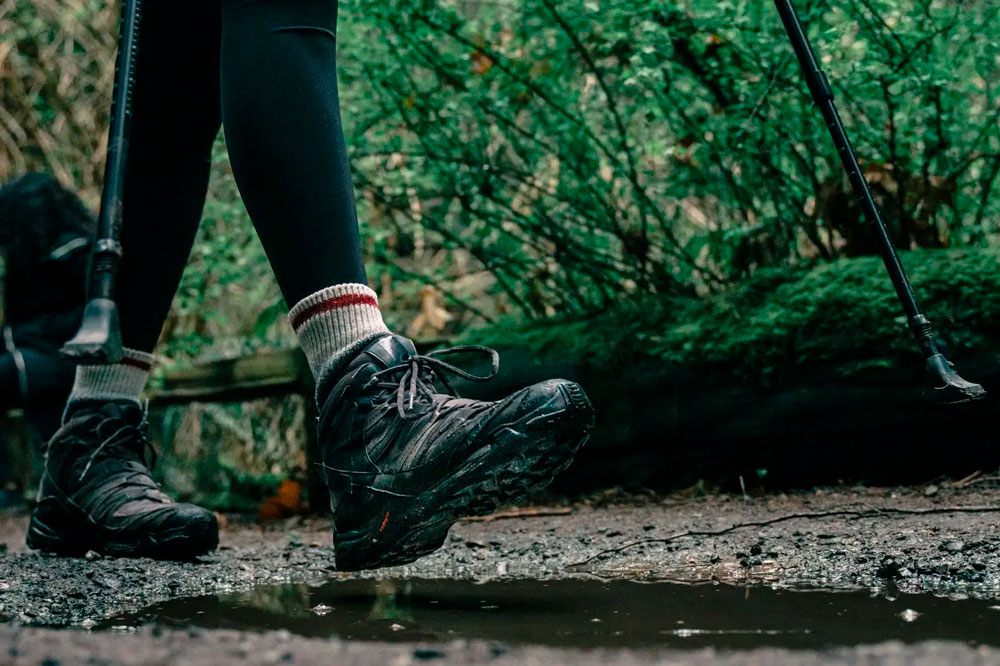Hiking is one of the most affordable physical activities for anyone looking to start engaging in sports and outdoor activities. However, this should not lead to underestimating recommendations for clothing, footwear, and gear.
To address this topic, I would like to share my personal experience. I started working on Road Trip to identify how to improve communication about hikes. So, I called each of the guides to ask about the most common issues on hikes, and 95% of them agreed on this point: Shoes. Hikers do not wear appropriate footwear, and this factor, which may initially be considered a minor issue, can truly make the difference between having an excellent and enjoyable experience or a long and painful hike. After making calls and writing some recommendations on the website's plans, it was time for me to do the part of my job I was most looking forward to: joining as a hiker. Excited, I proceeded to prepare all my work equipment: camera, memory, batteries, chargers, tripod, cell phone; nothing could be missing. Everything had to be in order to achieve the best shots and accurately portray the trail, landscape, and the experience of being in nature. I must say, no photo or video can truly convey what it is like to be there in person, in our landscapes, which I have taken the time to describe in detail in each of the plans we offer, but until now, I had not had the chance to explore.
When it came time to prepare my outfit, I thought I had everything figured out. I wrote the recommendations for the routes on the website myself, and both Pedro, our guide, and Olga, our logistics director, provided more precise recommendations in the WhatsApp group created for that Saturday's hikers. I should add that I am not new to hiking; I have been doing it for about three years, but since the pandemic began, this was my first time venturing back into the mountains. I took out a jacket that would keep me warm, knowing I would be in a cloud forest, and the cold led me to choose a jacket I used on the less harsh winter days in Washington. Then I looked for comfortable pants and a sports shirt I usually wear. The notes clearly stated: Wear shoes that can get wet, as we will be walking in the creek. My mind wandered, thinking about the medium-level hike, which I had beautiful references for thanks to my phone conversations with Pedro. For me, it was an easy hike since the distance was no more than 10 kilometers.
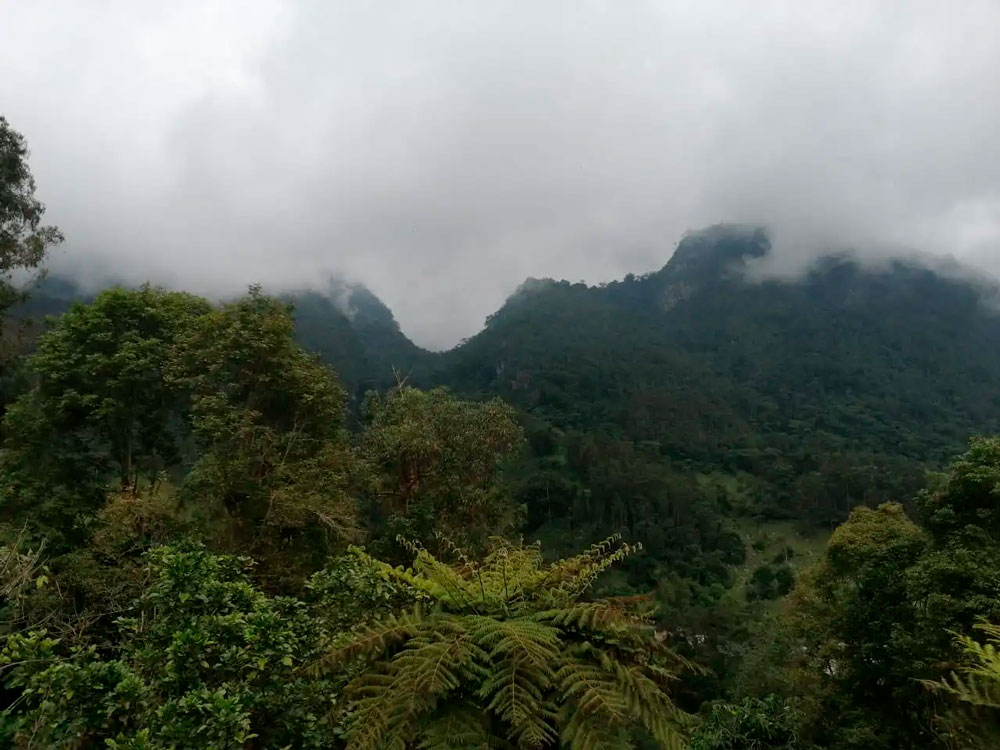
You have to experience it to understand it
The experience erased any expectations I had; the hike was far from being an easy one, and my choice of shoes was wrong. I fell into the mistake that I myself have tried to minimize by recommending the use of appropriate footwear. Like many of our hikers, I thought that when they told me I would be walking in a creek, it would be for a minimal stretch, so I wore some random shoes that could get wet. However, the sole had no grip and was very thin, making stepping on each rock painful, and I was constantly afraid of slipping. I learned not to underestimate my own recommendations and that a medium-level hike also has its challenges. That night, I arrived home incredibly tired but infinitely grateful for the wonderful experience that cannot be compared at all to the photographic record we have or the articles I have written about connecting with nature.
So, I want to dedicate this article to highlighting the importance of our choices regarding clothing and gear, which we often consider less relevant. Let's start with clothing. It's important to understand the significance of materials and how they can be allies on our journeys before purchasing new garments.
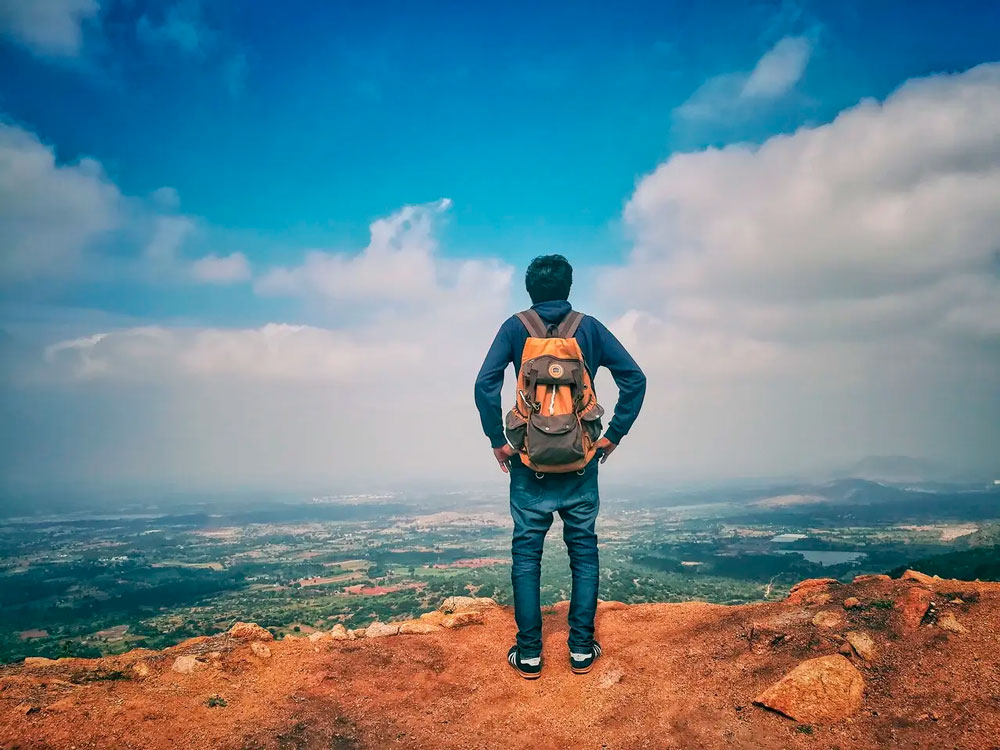
Choosing clothes for hiking
Cotton: This is a very comfortable material as it easily adapts to the body. However, it's important to keep in mind that it is a material that absorbs and retains water, which may not be very favorable if we are on a long hike with changing weather conditions. Being an absorbent material, water accumulates, causing sweat to be trapped in the clothing, and in cold weather, this could cause discomfort and even hypothermia.
Wool: Wool behaves similarly to cotton; by retaining water, it can add extra weight to the body and hold onto moisture. If there is a chance of rain, it is recommended to leave this material aside or use it as a layer after the hike or in the car.
Synthetic fibers: This material is very beneficial for outdoor activities, as it is breathable in case of sweating or rain and dries much faster, preventing water from accumulating. In addition, it is a very lightweight material that easily adapts to the body and also serves as a heat conductor, helping garments to dry faster and maintain body temperature.
The choice of material should be based on the climate, taking into account our geographic location. This factor is very variable since we have the privilege of access to different thermal floors. In an ecosystem like the high Andean moorland, the probability of rain is much higher, and in several of our hikes, we will have the opportunity to bathe under creeks, water pools, and even walk in rivers. For this reason, we always suggest using synthetic material garments as they dry much faster. In fact, it is recommended to dress in layers, consisting of three types of garments that can be removed or added according to the climate or activity during the trail:
Follow the three-layer theory:
First layer: This should be breathable, meaning made of synthetic material. The main reason is that it is the layer closest to the skin, and if sweat accumulates, it can be very dangerous if exposed to cold, causing hypothermia. Synthetic materials allow for quick drying, making them more appropriate.
Second layer: This garment is responsible for maintaining body heat. Items such as jackets and fleece sweatshirts can work very well. Be cautious with the weight of these garments, as they may or may not be favorable depending on the trail. If the weather is very cold, a warm garment is recommended. However, the physical activity you are doing will also help your body maintain heat, and a heavy jacket may be unnecessary, depending on the weather and the duration of your activity.
Third layer: This is crucial as it protects us from climatic factors such as rain, snow, or wind. Waterproof materials are essential because they prevent water, moisture, and wind from reaching our body. The use of lightweight garments is advisable, so we recommend windbreaker jackets, as they are easy to store and prevent the body from losing heat when in contact with the wind.
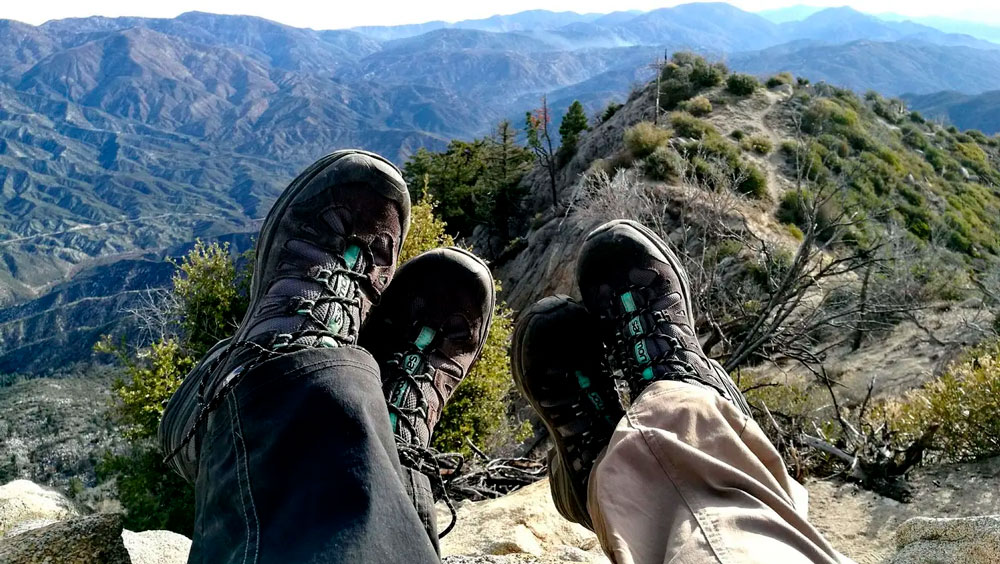
Hiking Footwear
The choice of shoes is crucial for our experience, surely if we wear Converse-style sneakers, we won't be comfortable, and the journey can become tortuous and dangerous. It's also vital not to wear brand-new shoes on a hike, as while the shoe adapts, it can cause painful injuries, which we must avoid. If you bought special shoes for your new experience, wear them on the days leading up to the hike to soften and adapt them for use. We recommend wearing waterproof footwear, which will keep your feet dry and light, making your walk more bearable even on a long hike. It's also essential that your shoes have a good grip and excellent protection in the heel and ankle to avoid injuries. When there are loose rocks, the foot is more prone to injuries, so a mid-calf boot provides special protection.
There is a wide variety of options on the market, so specialized hiking boots are the most recommended. If you're not yet ready for this investment, please check that your shoes have a good grip and avoid smooth soles, as this will help prevent accidents on your journey and allow you to walk with peace of mind.
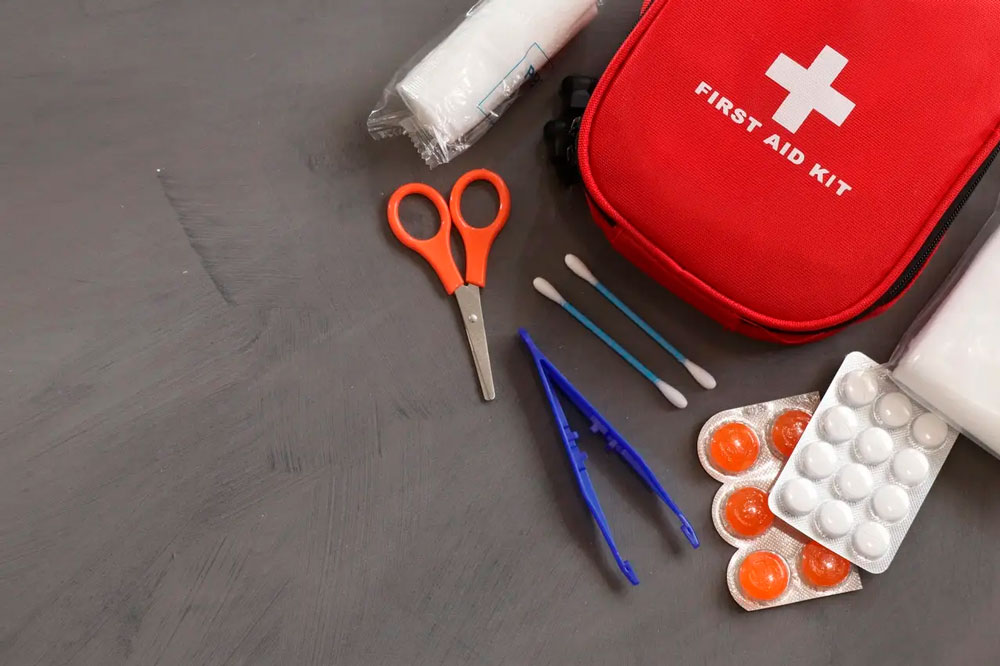
Hiking Equipment
We suggest carrying a lightweight ergonomic backpack on your back in which you can load your water bottle to hydrate yourself during your adventure, your snacks to recharge your energy, and a personal first aid kit containing your personal medications, adhesive bandages, wraps, and personal protective equipment such as face masks, antiseptic alcohol, and antibacterial gel. It's crucial that your backpack allows you to have your hands free, as you will need your hands to maintain your balance and grab onto other surfaces if necessary. A walking stick can also be very helpful, as it will help you find balance and relieve some of the strain on your knees when descending.
We always recommend bringing a change of clothes in case your clothes and shoes get wet along the way. Having a dry backup waiting for you in the van will make you feel much more comfortable on your trip back home. You can review the recommendations for each and every one of our routes or consult with our team for recommendations specific to each route.
